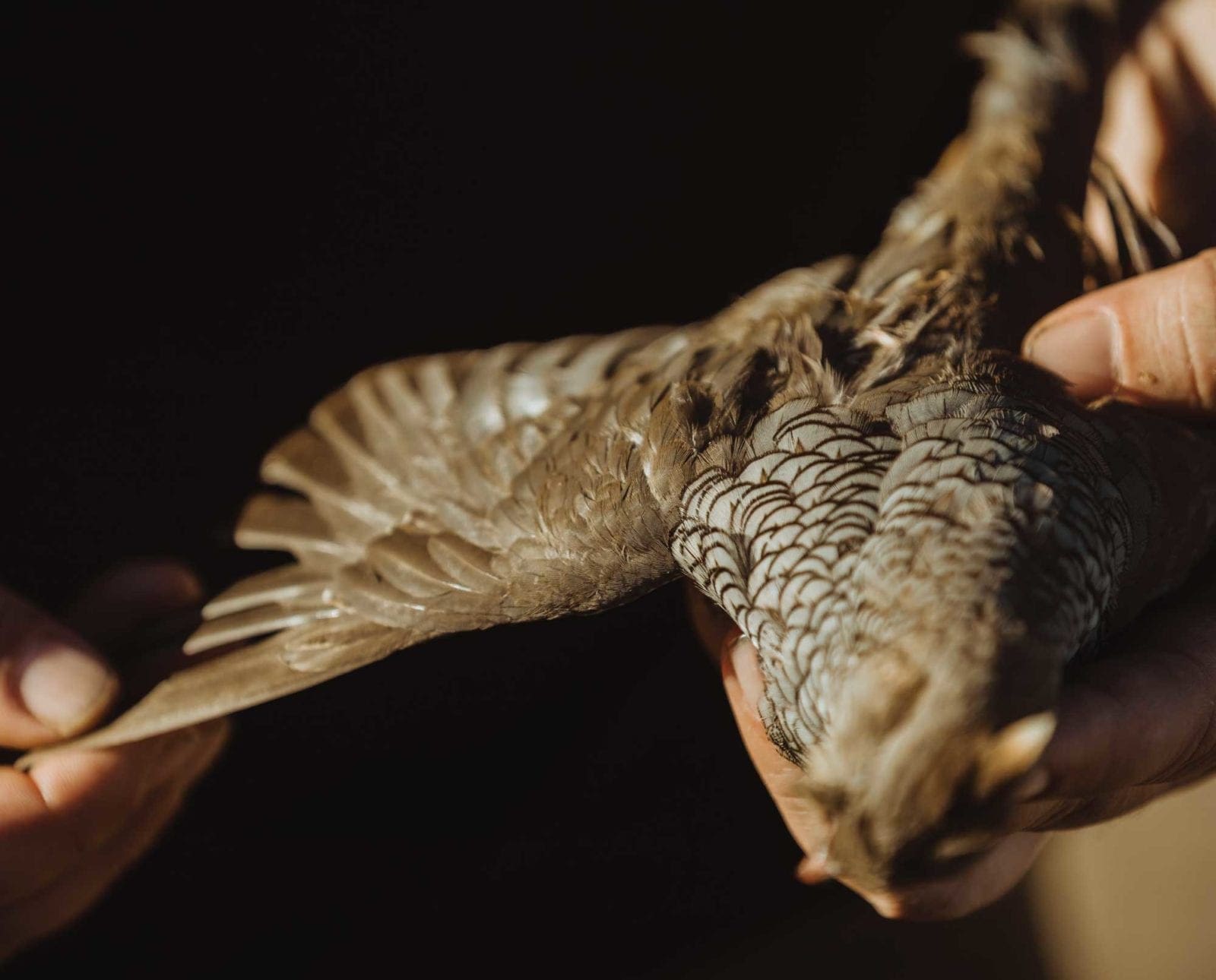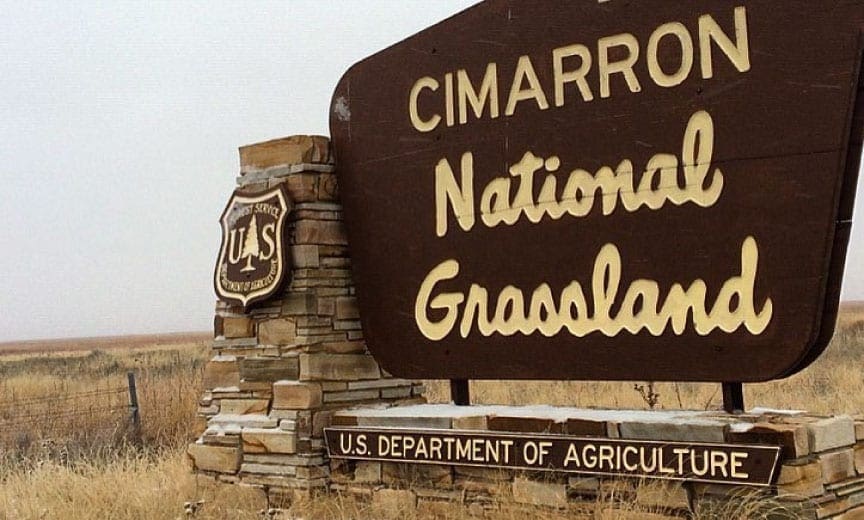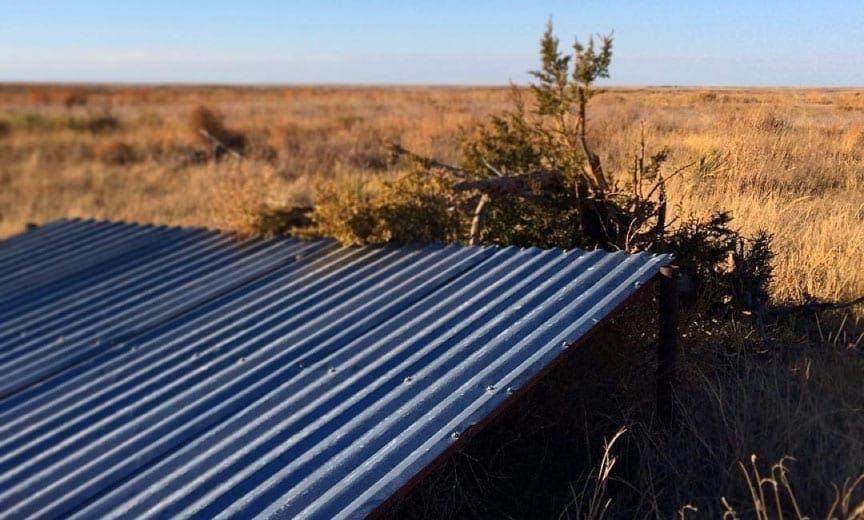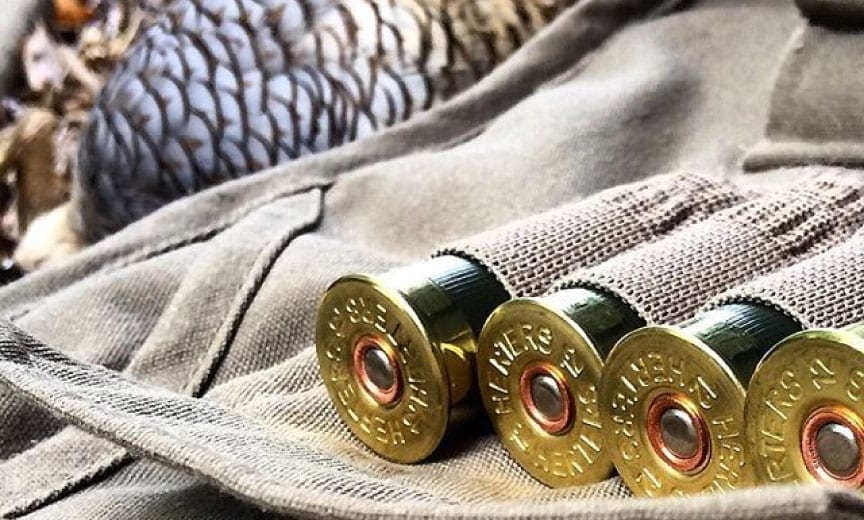Home » Public Lands » Scaled Quail Hunting the Cimarron National Grassland
Scaled Quail Hunting the Cimarron National Grassland

Edgar Castillo is a recently retired law enforcement officer for…
Hunting blue quail in the Sunflower State
If you haven’t heard about the Cimarron National Grassland in the extreme southwest corner of Kansas, don’t worry because most Kansans haven’t either. Ask a bird hunter and you may get the same whimsical look of unknown. It is the largest area of public land and the only parcel managed by the U.S. Forest Service in the state. The area is comprised of more than 108,000 acres which is made up of rock cliffs, cottonwood groves and grassland fields. Yucca and sagebrush are scattered throughout the land.
For the traveling wingshooter, bobwhite and scaled quail, pheasant, and mourning dove make up the upland game bird population. After hunting scaled quail in the Cimarron Grassland for several years, I have come up with some sound advice and tactics that may be beneficial when chasing these elusive, desert grassland running birds.

Scaled quail in Kansas
The scaled quail derives its name from scale-like markings and the appearance of its breast and back feathers. Along with the scaly markings, it is easily identified by the white crest that resembles a tuft of cotton on top of its head. Because of this, they are also referred to as “Cotton-Tops.” Callipepla squamata hargravei is the subspecies of scaled quail found in Kansas. It has the palest coloration of the three subspecies.
Scaled quail are ornately dressed and possess a sort of regal, distinctive look about them. If the bobwhite quail are the gentlemen of the gamebirds, and the Gambel’s the knights, then the scaled or blue quail are its princes.
Scaled quail habitat
Typical scaled quail habitat is characterized by relatively flat open country interspersed with rolling hills with low-growing grasses. Look for terrain with a scattering of shrubs, yucca plants and cholla cactus which provide cover and shade. Don’t rule out areas of grassland that transition into semi-barren ground and habitat.
Watch the roads
Watch the rear-view mirror when driving in scalie country. Scaled quail can be seen frequently on the sides of the roads or along ditches as they scurry along. Keep driving as birds will scatter.
If scalies are spotted on the road, do not stop and attempt to chase them. Instead, park a couple hundred yards away and if legally accessible, enter and make a wide berth with dogs back to the location where the scalies were last seen. Keep one hunter on the road, slowly walking towards the birds to watch if they cross. If no birds flush upon the approach, the hunter should walk both sides of the roads along fences as singles are likely to be using them as a travel way.
Scaled quail are runners
Scaled quail are notoriously known to be cross-country desert trail runners. When a covey is found, hunters will see birds start to peel off in all directions. Hunters should continue to push the birds until they run out of cover or if forced, will take to the air.
Scaled quail typically fly low and at high speed. Prior to the covey taking flight, hunters will have a chance at working up singles and pairs that will break off from the main group.
Hunt the structure
The vastness of the area — more than 108,000 acres of public land — can make finding scaled quail like searching for a feather in a haystack. Scaled quail gravitate towards any kind of structure they can find on the grasslands. Birds utilize these structures for protection from predators as well as from the elements.
Look for frameworks that are made up of dead trees and logs, or quail huts that have been erected throughout the grasslands for both blues and bobs. Excellent places to hunt include dilapidated homesteads or corrals that have been abandoned, crumpled windmills and stock tanks, and old farm machinery and implements with tumbleweeds. These are all good places to start your search.
Walk in circles
Guzzlers also abound in the prairie and are scattered to help provide water for wildlife. A guzzler is a corrugated tin roof built about two feet off of the ground. They are built at an angle so rain water or dew can run off into a catch trough underneath the roof in the shade. Check for footprints in these areas. If found, a good method or tactic to use when hunting structures is to walk in concentric circles around them, progressively expanding the circles, thus widening the search area with each pass. Other areas bird hunters can focus on are washes and dusty areas. Look for fresh diggings under trees and shrubs. Hunt these in concentric circles, too.

Scaled quail are not like bobwhite
It’s a wonder that scaled quail have wings at all! Blues would rather run than fly. Where Gentleman Bob will generally hold (they are known to run too!), blues will take to running until pushed and forced to take to wing. In the “Bobs versus Blues” battle, bobwhite quail tend to provide wingshooters the opportunity to follow up on a covey flush if you can spot where they land. Bobs will hold or stay relatively close to where they land. Once blues flush, they tend to fly farther distances and hit the ground running like wind-up toys let loose, scattering across the land. Scalies will land in grassy patches or even cactus, and open ground.

Bear in mind, hunters chasing blue quail need to be prepared for the vastness of the landscape. Be physically fit, capable of walking long distances and, on occasion, of moving quickly if birds are located. Carry plenty of water for man and beast. Take careful consideration of the variety of plants that can and will stick, poke, and prod both you and your dog. Most of the plants that thrive in the southwest corner of the Sunflower State include a variety of flora with thorns, prickly burrs or needle-like leaves.
Dog booties should be brought as well as a Leatherman-type multi-tool for removing these nuisances. Porcupines abound in the area and their quills can play havoc to bird dogs who find them borrowed under yucca plants and across the grasslands.
Kansas scaled quail numbers are dependent on the amount of rain that falls throughout the year. Bird hunters who are venturing to check scaled quail off of their Kansas Grand Slam list must pay close attention to weather patterns for the area. Talking to area biologist and Cimarron Grassland field staff is also beneficial in determining a bad or good year to hunt the Kansas blues.
Edgar Castillo is a recently retired law enforcement officer for a large Kansas City metropolitan agency. He also served in the United States Marine Corps for twelve years. Edgar longs for the colors of autumn and frosty, winter days so he can explore the landscapes in search of wild birds in wild places. His passion lies in the uplands as he self-documents his travels across public lands throughout Kansas hunting open fields, walking treelines, & bustin’ through plum thickets.





Looks like a great place to go hunt. We’ll have to add a quail hunt in Kansas to our list
The CNG is vast and offers the opportunity to hunt bobwhite quail and pheasants. It really is unique place within the state.
Is it the same on the Colorado side?